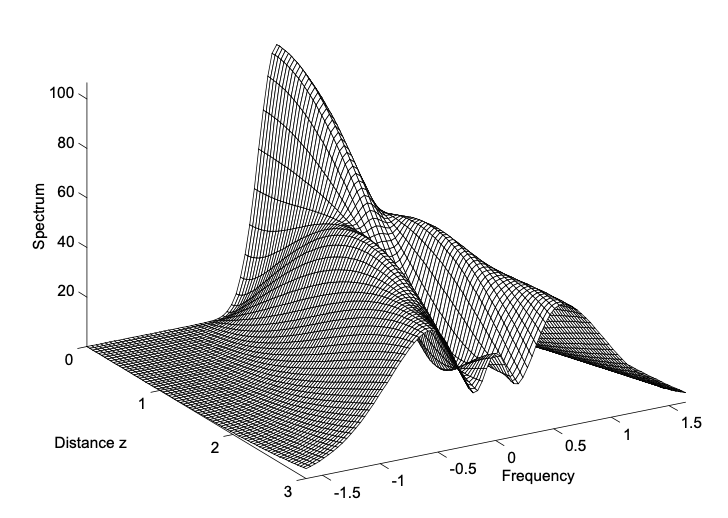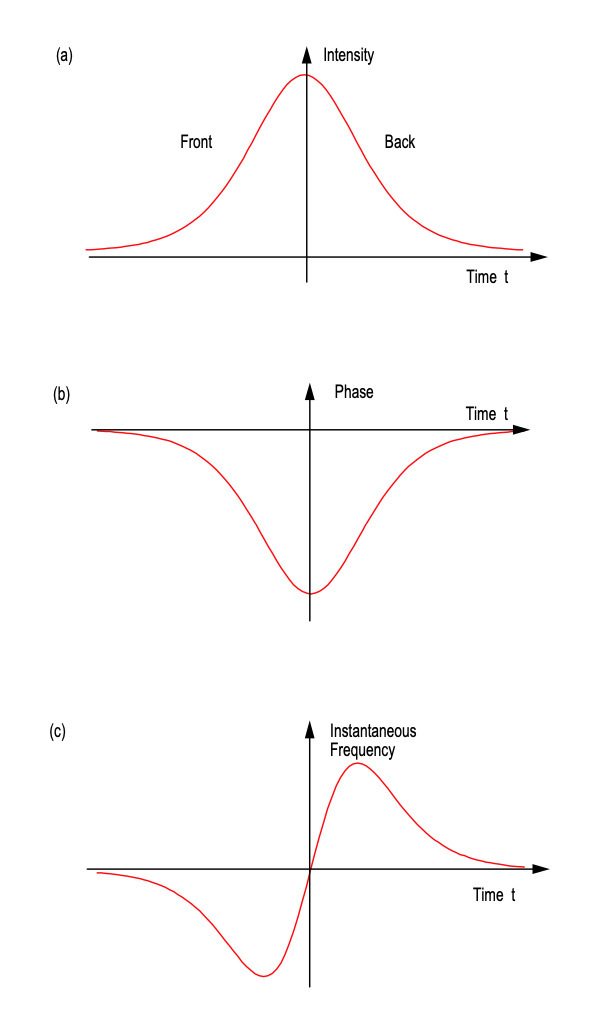3.2: Self-Phase Modulation (SPM)
- Page ID
- 44647
In a purely one dimensional propagation problem, the intensity dependent refractive index imposes an additional self-phase shift on the pulse envelope during propagation, which is proportional to the instantaneous intensity of the pulse
\[\dfrac{\partial A(z,t)}{\partial z} = -jk_0 n_{2, L} |A(z,t)|^2 A(z, t) = -j\delta |A(z,t)|^2 A(z, t). \nonumber \]
where \(\delta = k_0n_{2,L}\) is the self-phase modulation coefficient. Self-phase modulation (SPM) leads only to a phase shift in the time domain. Therefore, the intensity profile of the pulse does not change only the spectrum of the pulse changes, as discussed in the class on nonlinear optics. Figure 3.1 shows the spectrum of a Gaussian pulse subject to SPM during propagation (for \(\delta = 2\) and normalized units). New frequency components are generated by the nonlinear process via four wave mixing (FWM).

If we look at the phase of the pulse during propagation due to self-phase modulation, see Figure 3.2 (a), we find, that the pulse redistributes its energy, such that the low frequency contributions are in the front of the pulse and the high frequencies in the back of the pulse, similar to the case of positive dispersion.



